Wi-Fi antenna testing for WiMax reception
In this article, I just talked about installing a miniPCIe WiMax module in Samsung Q1 Ultra.
In the process of waiting for the delivery of the controller, I was tormented by the question of how to deal with the antenna for it.
Q2W gave me a little hope with my answer , and I decided that I would try my luck with my antennas.
In this article, I described the addition of an external antenna to the Wi-Fi controller integrated into the UMPC.
And below I will give the results of their use for WiMax
')

UP. The article has three updates:
1. Comparison with HTC MAX 4G in poor reception conditions.
2. Test the new antenna - the winner
3. The results of tracing google.com and torrent test of the 7th season House MD :)
Here is what I had:
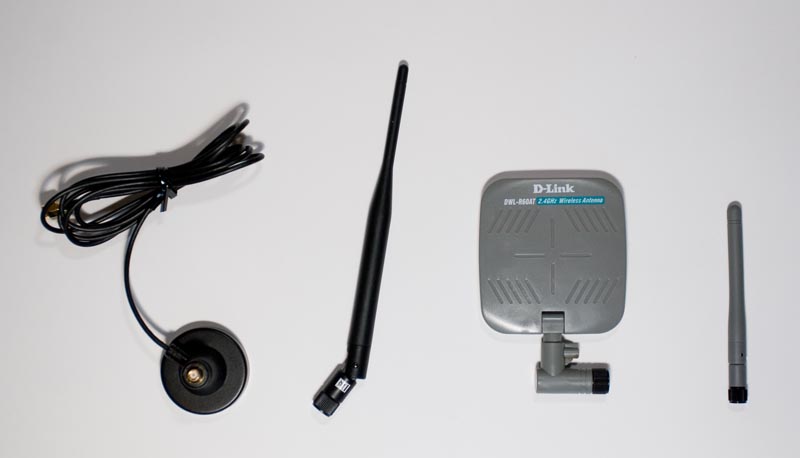
in the photo from left to right: a remote mount, antennas Planet 5dbi, D-Link DWL-R60AT 6dbi, “ordinary Wi-Fi antenna”
I started with speed measurements without an antenna. Yes, even without an antenna, the device caught the signal. Perhaps there is something built into the intel 5150, maybe something was caught on the mini-coaxial cable that goes to the antenna connector.
I note that doubts about the compatibility of the WiMax and Wi-Fi antennas have been greatly reduced as soon as I received my intel 5150.
The adapter supporting WiMax and Wi-Fi did not have separate antenna outputs for them, but only for internal and external antennas:

So, I ran the tests indoors:
1. Without an antenna, the picture is sad:
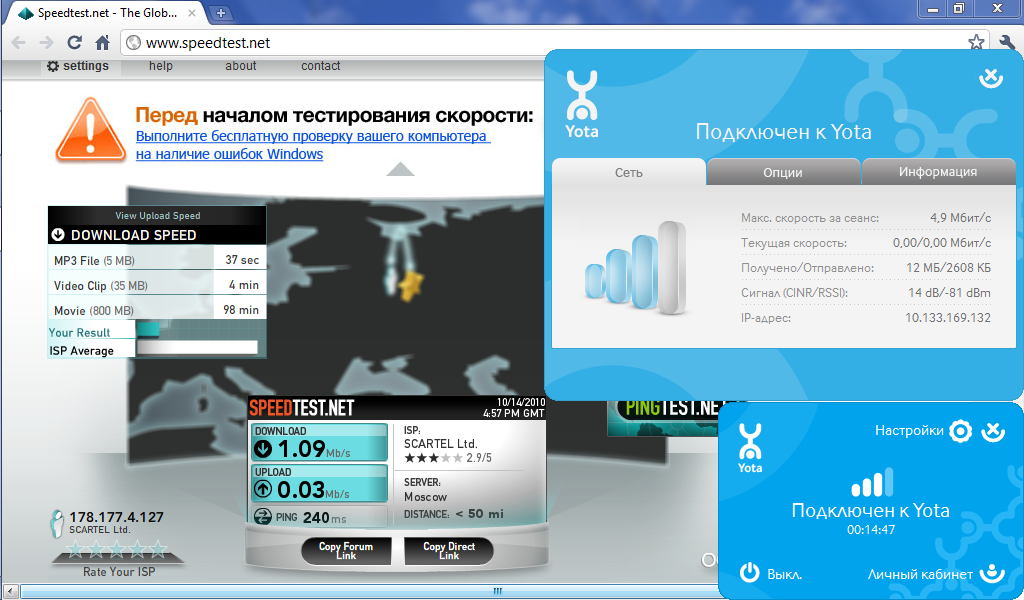
Speed 1Mbit; CINR / RSSI: 14dB / -81dBm
2. With the “usual Wi-Fi antenna” remaining from the D-link router
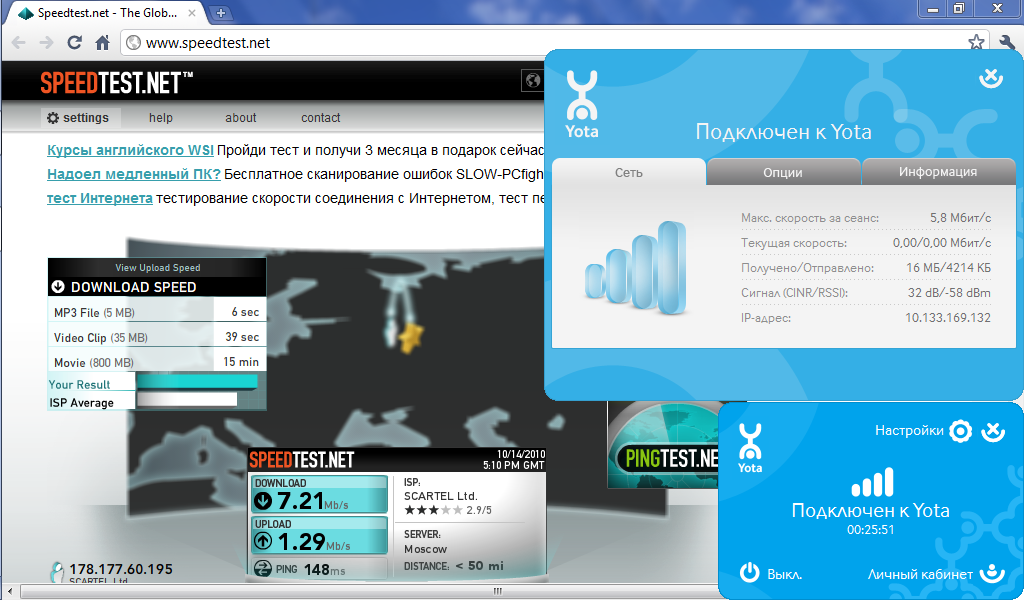
Speed 7.21 Mbit; CINR / RSSI: 32dB / -58dBm
3. With antenna Planet 5dbi
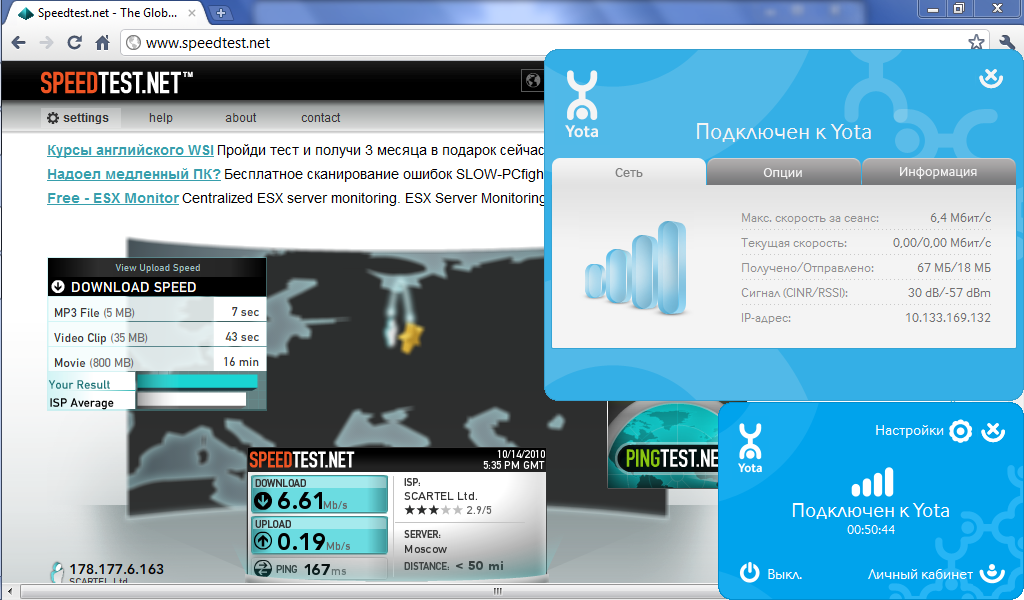
Speed 6.61 Mbit; CINR / RSSI: 30dB / -57dBm
4. With antenna D-Link DWL-R60AT 6dbi
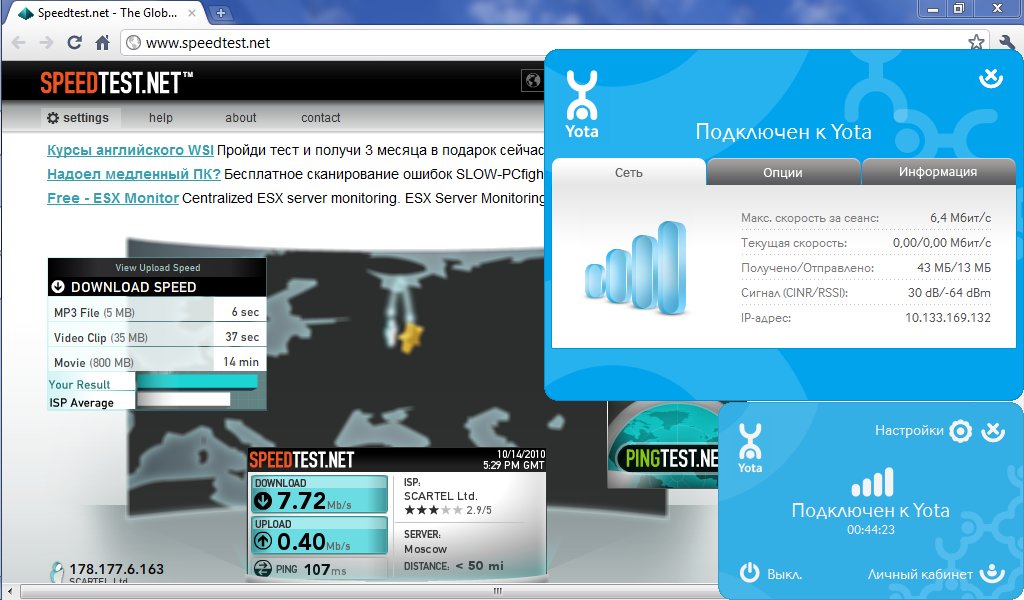
The speed of 7.72 Mbit; CINR / RSSI: 30dB / -64dBm
This is a directional antenna and the above is the best result from 8 positions on the cardinal points.
I will give the worst option:

Speed 5.19 Mbit; CINR / RSSI: 26dB / -68dBm
It is rather strange to observe such a small scatter, when testing WiFi the antenna showed high directivity. Maybe I am surrounded by base stations?
The long-awaited conclusion:
- A significant part of Wi-Fi antennas are compatible with WiMax. (Generally speaking 3 out of 3 tested)
- External antennas provide excellent signal quality.
UP.
As promised, I conducted the test in a place with a low signal level.
In comparison with HTC MAX 4G, I have CINR 7dB vs. CINR 0dB on HTC MAX. But both devices on the indicator show 2 features of 4.
The speed is about 2Mbit.
UP2. I remembered that I had another antenna lying around:
TRENDnet TEW-AI750. She dumped because for Wi-Fi, it showed very bad results.
Here she is:
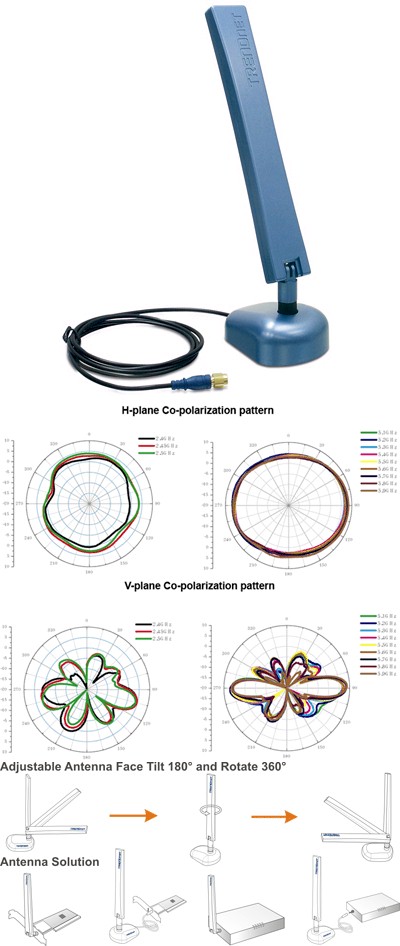
I posted such a cool picture, because this antenna turned out to be the undisputed winner in the “antenna for Yota WiMax” nomination:
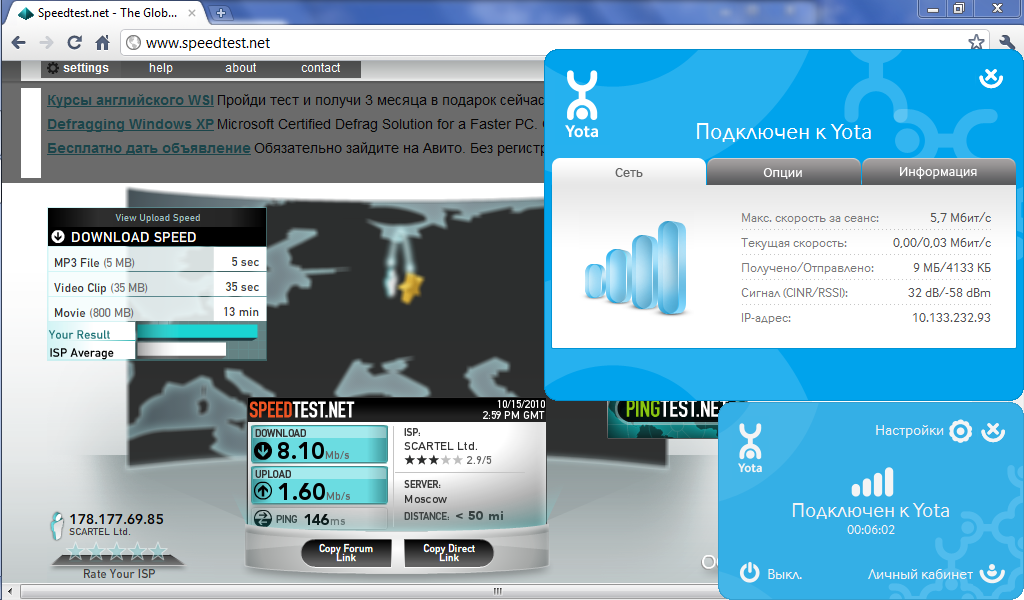
Speed 8.10 Mbit; CINR / RSSI: 32dB / -58dBm
With it, I traced using PingPlotter:
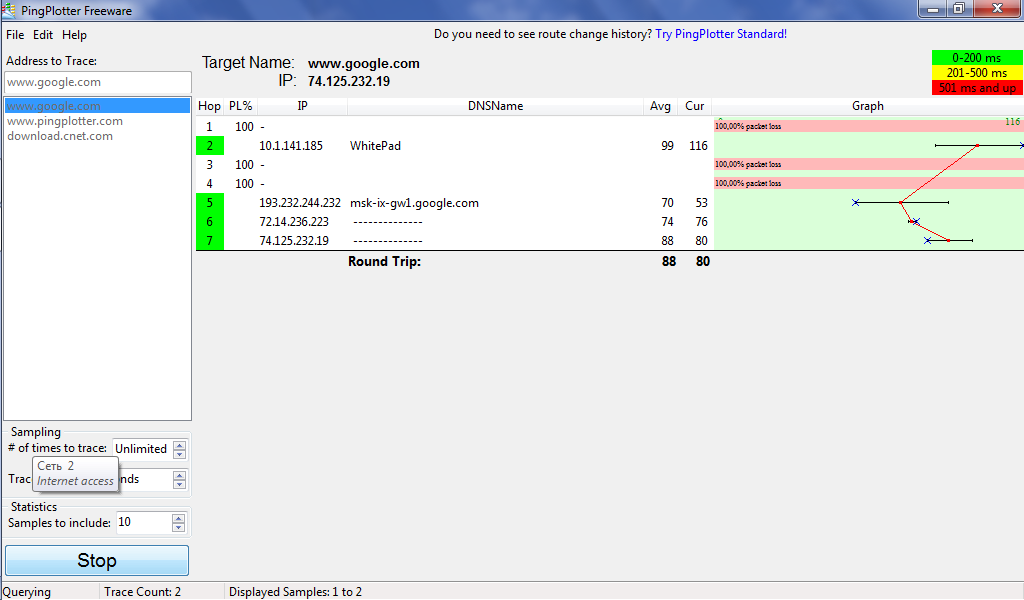
And testing in real application:

The speed is exactly 1 megabyte per second. In my opinion - just great.
The explanation of such good results can be found in the specifications, on the manufacturer's website:
Frequency range
802.11a: 4.9 ~ 5.875GHz
802.11b / g: 2.4 ~ 2.5GHz
Gain 802.11a: 7dBi
802.11b / g: 5dBi
The antenna supports a very wide frequency range - from 2.4 to 5 GHz, and, apparently, this is just what you need for WiMax
UP.
After a while, I copied this article on pasokon.ru , if you have questions, but there is no account on Habré, you can write there.
In the process of waiting for the delivery of the controller, I was tormented by the question of how to deal with the antenna for it.
Q2W gave me a little hope with my answer , and I decided that I would try my luck with my antennas.
In this article, I described the addition of an external antenna to the Wi-Fi controller integrated into the UMPC.
And below I will give the results of their use for WiMax
')

UP. The article has three updates:
1. Comparison with HTC MAX 4G in poor reception conditions.
2. Test the new antenna - the winner
3. The results of tracing google.com and torrent test of the 7th season House MD :)
Here is what I had:

in the photo from left to right: a remote mount, antennas Planet 5dbi, D-Link DWL-R60AT 6dbi, “ordinary Wi-Fi antenna”
I started with speed measurements without an antenna. Yes, even without an antenna, the device caught the signal. Perhaps there is something built into the intel 5150, maybe something was caught on the mini-coaxial cable that goes to the antenna connector.
I note that doubts about the compatibility of the WiMax and Wi-Fi antennas have been greatly reduced as soon as I received my intel 5150.
The adapter supporting WiMax and Wi-Fi did not have separate antenna outputs for them, but only for internal and external antennas:

So, I ran the tests indoors:
1. Without an antenna, the picture is sad:

Speed 1Mbit; CINR / RSSI: 14dB / -81dBm
2. With the “usual Wi-Fi antenna” remaining from the D-link router

Speed 7.21 Mbit; CINR / RSSI: 32dB / -58dBm
3. With antenna Planet 5dbi

Speed 6.61 Mbit; CINR / RSSI: 30dB / -57dBm
4. With antenna D-Link DWL-R60AT 6dbi

The speed of 7.72 Mbit; CINR / RSSI: 30dB / -64dBm
This is a directional antenna and the above is the best result from 8 positions on the cardinal points.
I will give the worst option:

Speed 5.19 Mbit; CINR / RSSI: 26dB / -68dBm
It is rather strange to observe such a small scatter, when testing WiFi the antenna showed high directivity. Maybe I am surrounded by base stations?
The long-awaited conclusion:
- A significant part of Wi-Fi antennas are compatible with WiMax. (Generally speaking 3 out of 3 tested)
- External antennas provide excellent signal quality.
UP.
As promised, I conducted the test in a place with a low signal level.
In comparison with HTC MAX 4G, I have CINR 7dB vs. CINR 0dB on HTC MAX. But both devices on the indicator show 2 features of 4.
The speed is about 2Mbit.
UP2. I remembered that I had another antenna lying around:
TRENDnet TEW-AI750. She dumped because for Wi-Fi, it showed very bad results.
Here she is:

I posted such a cool picture, because this antenna turned out to be the undisputed winner in the “antenna for Yota WiMax” nomination:

Speed 8.10 Mbit; CINR / RSSI: 32dB / -58dBm
With it, I traced using PingPlotter:

And testing in real application:

The speed is exactly 1 megabyte per second. In my opinion - just great.
The explanation of such good results can be found in the specifications, on the manufacturer's website:
Frequency range
802.11a: 4.9 ~ 5.875GHz
802.11b / g: 2.4 ~ 2.5GHz
Gain 802.11a: 7dBi
802.11b / g: 5dBi
The antenna supports a very wide frequency range - from 2.4 to 5 GHz, and, apparently, this is just what you need for WiMax
UP.
After a while, I copied this article on pasokon.ru , if you have questions, but there is no account on Habré, you can write there.
Source: https://habr.com/ru/post/106196/
All Articles